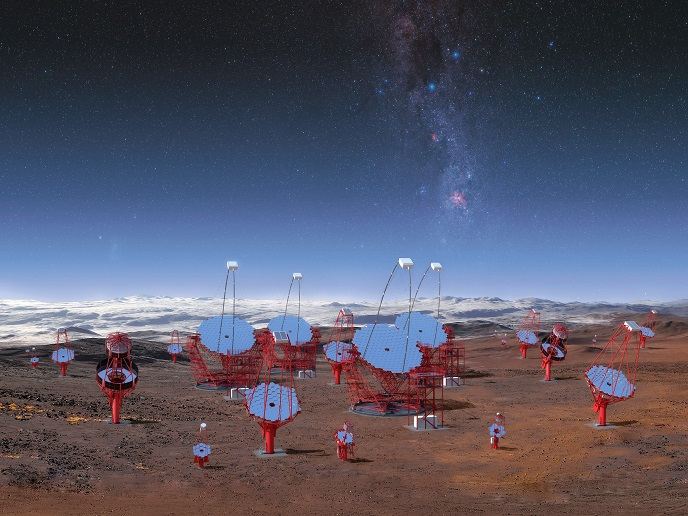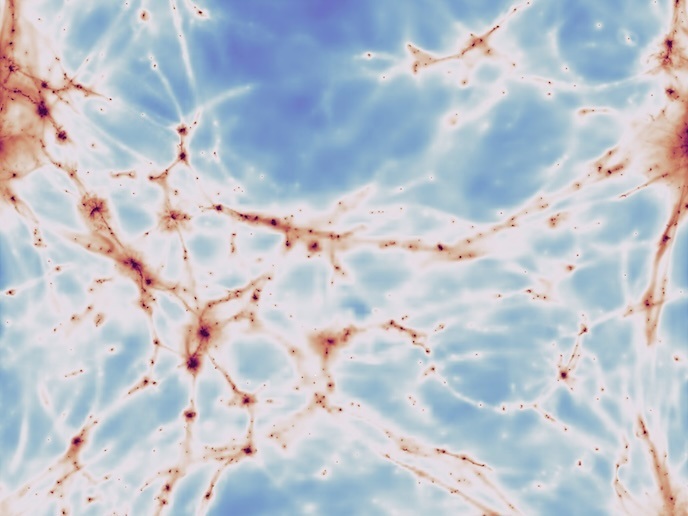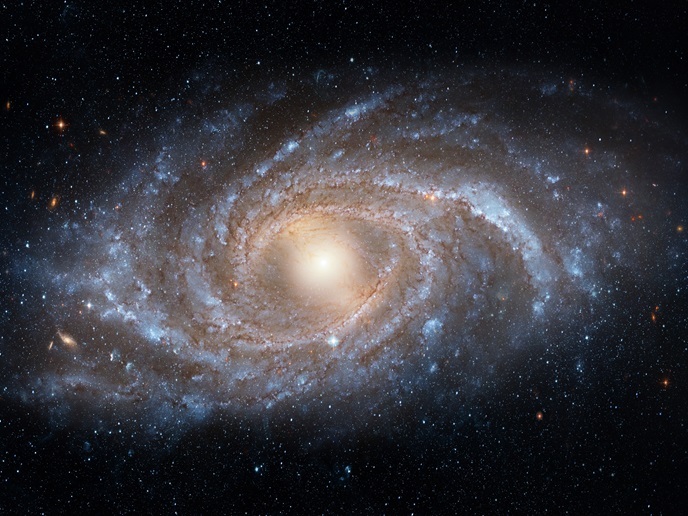The most powerful detector of the most extreme cosmic events is nearing construction
The electromagnetic(opens in new window) (EM) spectrum is the continuous and infinite range of frequencies and corresponding wavelengths of all types of EM radiation, ‘carried’ by particles called photons with corresponding energies. Visible light is only a small part of the middle of the EM spectrum. Gamma rays are at the high-frequency end – in fact, the frequency range for gamma radiation is so vast and unknown that it does not have a well-defined upper limit. The Universe is the greatest gamma-ray generator. While current infrastructure for high-energy measurements has revealed tantalising hints at the mysteries hidden in the cosmic radiation, it has also suggested that we have barely seen the tip of the iceberg. The spectacular Cherenkov Telescope Array (CTA)(opens in new window) will provide a new window on the most extreme events in the Universe. The EU-funded CTA-DEV project is moving CTA from design to implementation, addressing the infrastructure construction(opens in new window), governance(opens in new window) and outreach(opens in new window).
There is a time and a place for everything, and it is here and now for CTA
Since 2003, the current generation of ground-based gamma-ray detectors has increased known gamma ray-emitting objects from 10 to more than 150. In 2008, the CTA Consortium(opens in new window) formed to develop the concept for the next generation of detectors with the accuracy and sensitivity to expand this register of known objects 10-fold. Today, more than 1500 scientists and engineers from 31 countries in the Consortium together with shareholders from 11 countries and one intergovernmental organisation are working to make this initiative a reality. Federico Ferrini is the managing director of CTAO gGmbH, the interim legal entity established to prepare for CTA implementation. According to Ferrini, “CTA was the idea of a few people in a room more than a decade ago and, today, we have our site agreements in hand, working prototypes for all the proposed telescope designs and significant site characterisation and design work underway. Construction is expected to begin in 2021.” CTA will be the first ground-based gamma-ray observatory open to the global scientific community(opens in new window). Actual observations will be carried out by operators and the data and analysis tools will then be made available to the principal investigator in common data formats. After approximately one year, the data will be made publicly available to the astrophysics and particle physics communities and beyond.
Accelerating discovery and understanding
With its more than 100 telescopes at 2 sites in the northern(opens in new window) and southern(opens in new window) hemispheres and its ability to cover an enormous range in photon energy from 20 gigaelectronvolts to 300 teraelectronvolts (TeVs), CTA will significantly enhance performance and potential relative to current instruments. “And its wider field of view and 10-fold improvement in sensitivity will enable CTA to survey the sky hundreds of times faster than previous TeV telescopes,” adds Ferrini. The scientific potential of CTA is tremendous, seeking new insight into cosmic sources of gamma rays including black holes, supernova remnants, pulsars, binary systems and even elusive dark matter(opens in new window). CTA will fundamentally change how we see the high-energy Universe(opens in new window) in a way that will impact generations to come. “We will be able to see gamma-ray sources in greater detail, identify new sources and possibly unveil some of the Universe’s greatest mysteries such as the nature of dark matter. Of course, the most exciting discoveries will be those that are unexpected!” concludes Ferrini.







